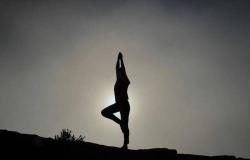1 Which regions will be affected this week?
These Saharan sand clouds should mainly affect the southern half of France. It is particularly in the South-West that the concentrations should be the highest, with a peak expected on Wednesday October 30 and Thursday October 31. In the north of the country, quantities of sand should be negligible, according to meteorologist Anthony Grillon.
2 What are the repercussions on health?
A Sahara sand cloud is a form of fine particle pollution peak. As such, it is particularly harmful to people with pre-existing respiratory diseases, such as asthma or pulmonary fibrosis. In spring, the winds also carry pollen which can trigger crises for vulnerable people.
Fine particles play an irritating role which aggravates allergies and can cause eye, nose or throat irritation in the entire population.
In 2017, the Health Surveillance Institute, now Public Health France, noted that “clouds of dust coming from the Sahara introduce micro-organisms and other biological materials (fungi, mold, etc.) into the atmosphere”. The biologist Claude-Alexandre Gustave also explained, then, that “inhaled sand particles can serve as a vehicle for pathogenic bacteria and viruses”.
Sahara dust: health risks?
Since March 15, many of us have observed an orange sky and noticed the presence of sand particles on our cars. Sand coming directly from the Sahara. In fact, “this phenomenon is not rare and presents maximum activity around summer in connection with the African monsoon. The latter produces violent winds which will lift the sand and transport it, when weather conditions are favorable, over large distances,” explains the National Network of Air Quality Monitoring Associations.
Conversely, it should be noted that this dust generally has a beneficial effect for the environment, since it carries mineral fragments often rich in phosphorus or iron, which are essential for land plants and phytoplankton.
3 What precautions should you take?
By adopting the right reflexes, it is possible to limit the harmful effects on health of these sand clouds, particularly when they are of low intensity. The WHO therefore recommends not being exposed to this dust when it exceeds the threshold of 45 micrograms/m³ on a daily average.
First recommendation, avoid ventilating your home during peaks, so as not to let these particles enter your home. You can also use an air purifier to clean your interior. It is also recommended to limit physical activity outdoors. During sports, you increase the amount of air that enters your lungs. And therefore, during sand clouds, the amount of fine particles and pollutants that can infiltrate your body.






